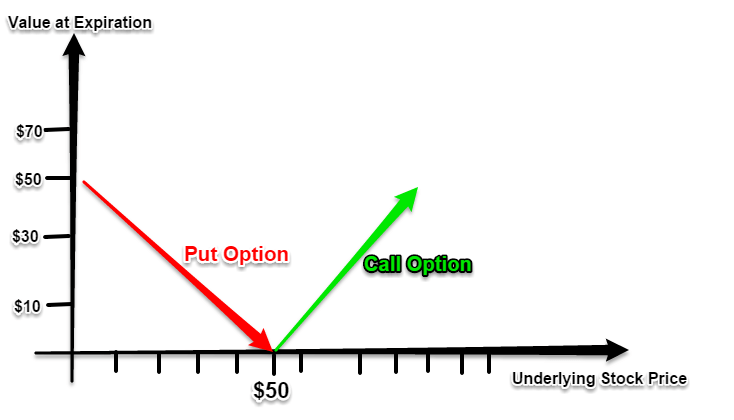

A lower interest coverage ratio indicates that a company is using more financial Leverage, as it is generating fewer earnings relative to its interest expenses. In the DuPont method, Equity Multiplier is the third parameter used for the computation of return on equity. A measure of financial leverage, the equity multiplier is arrived at by dividing the company’s total value of asset by total net equity. Leverage ratios lay down a cap on the debt levels of a firm, while coverage ratios lay down a minimum floor below which the company’s cash flow must not fall. There are various ratios that may be classified as a leverage ratio, but the major factors considered are debt, equity, assets, and interest expenses.
Indices can only be traded through instruments that replicate their price movements, such as CFD trading and ETFs because they are not tangible assets. The leverage ratio is the ratio of your entire exposure to your margin. This may either end in a lower income goal or insufficient working revenue to cowl other expenses and will end in negative earnings for the corporate.
What is leverage ratio of a lever?
Leverage is the ratio of load arm to effort arm. Explanation: Leverage is the ratio of effort arm to load arm. 3.
Debt ratio highlights the extent to which company assets were financed through debt. Debt ratio indicates the company’s overall debt liability and the amount of assets the company must liquidate in order to pay off all its borrowings. For a particular period of time, the cash generated by the firm and the equity capital contributed by the founder and/or external equity investors could be sufficient. Eventually, the consumer leverage ratio refers to the level of consumer debt in comparison to disposable income and is utilized in economic analysis and by policymakers. It’s never a good thought to have too much debt in business, nor will those investing in such a business look positively upon such a notion for evident reasons. But if a business manages to create a higher return far outweighing the interest rate of the loans utilized to fund its expansion then it’s a different situation altogether.
Here, the numerator is the dependent variable and the is the independent variable. Leverage is a loan from your broker that allows you to take a larger stake in the market. However, there are no obligations in the form of interest or commission with this ‘loan,’ and you could utilize it in any way you like when trading. Leverage increases the amount of money accessible to invest in different markets. This means you’ll be able to put money into different trade positions in your portfolio. There are additional Exchange Traded Funds that employ leverage to alter their performance in comparison to the market.
A limitation of using the leverage ratio is that investors are reliant on banks to properly calculate and report their tier 1 capital and total assets figures. If a bank doesn’t report or calculate these figures properly, the leverage ratio could be inaccurate. RBI has reduced the leverage ratio from 4.5 percent to 4 percent for systemically important banks and 3.5 percent for other banks, which will help them increase exposure. Will the reduction in leverage ratio lead to higher credit growth? For well-capitalised banks with CAR much higher than regulatory requirement, it could encourage increasing exposure.
Leverage in Stock Market
The total assets of your company that are funded by the shareholders is measured by the asset-to-equity ratio. Shareholder’s equity can comprise minor interest, preferred stock, or company stock. If this ratio is low it means that your firm has selected conservative financing and has a minimal amount of debt.
Banking institutions often use the capital leverage ratio to track finances. Businesses also use this metric to show the level of debt compared to their accounts, for instance, cash flow statements, income statements, or balance sheets. When giving money to businesses, lenders evaluate the firm’s financial leverage. Moneylenders are less reluctant to provide further cash to firms with a massive debt ratio since the risk of failed payment is much greater.

This ratio compares the total debt of a company to its total equity (i.e., the value of the company’s assets minus its liabilities). The debt ratio gives users a quick measure of the amount of debt that the company has on its balance sheets compared to its assets. The more debt compared to assets a company has, which is signaled by a high debt ratio, the more leveraged it is and the riskier it is considered to be.
The term monetary leverage can also be used to describe the overall debt load of a company by evaluating debt to belongings or debt to fairness. The working leverage measures the impact of fixed cost whereas the monetary leverage evaluates the effect of curiosity bills. However, an extreme quantity of economic leverage will increase the risk of failure, since it becomes more difficult to repay debt. If there is no news of the financial strength related to a firm, how can an investor rely on it?
Investors need to understand the company’s strategy before they decide to invest. This ratio measures the relationship between the owner’s capital and the company’s amount of its debts. High financial leverage shows a higher burden of interest cost consequently higher financial risk.
Leverage Ratio Meaning and Formula
A high ratio denotes high debt and lenders would refrain from providing additional financing to such companies. Typically, a D/E ratio greater than 2.0 signals a risky scenario for an investor; however, this yardstick can vary with organisation. Businesses that needs large capital expenditures , such as utility and manufacturing firms, may need to take more loans than other organisations.
Beginners must understand that leverage only applies to the allotted capital used in a trade. So if you have 10,000 USD in your trading account and open a trade with 1,000 USD, the leverage will only apply to that 1000 USD. However, this doesn’t mean that your trading account won’t be affected by leverage if you lose badly on a trade. Any losses you make that are not covered by your margin will be taken from your trading account. In some cases, one bad trade can wipe out entire trading accounts.
There are three measures of Leverage i.e. working leverage, financial leverage, and combined leverage. The most widely financial ratio of all the leverage ratios is the Debt to Equity ratio and is defined as the ratio of the total debt to the total equity of the company. There are several leverage ratios that may be studied by market analysts, investors or lenders.
Investors may use three different coverage ratios to evaluate their ability to repay their debt. If the total liabilities exceed the shareholders’ equity, an investor will think twice about whether or not to invest in the company. Below, we’ve covered Capital Structure Ratios and Coverage Rates. Learn about the differences between these ratios and their effect on your business. In addition, you’ll learn more about capital structure and how to calculate it for yourself.
Click here to download the PDF on Leverage Ratio for UPSC Exams!
The two prime ratios calculated here are- the debt ratio and debt-to-equity ratio. They depend on those records which complete a company’s balance sheet. Financial Leverage is crucial because it allows investors to increase the potential return on their investment by amplifying the potential returns on the assets they have purchased. By taking on debt to purchase assets, investors can earn a higher return on their investment than they would have achieved with their own capital alone. Another way to measure financial Leverage is to use the interest coverage ratio, which compares a company’s earnings before interest and taxes to its interest expenses. To calculate the interest coverage ratio, you divide the EBIT by interest expenses.
- For example, if an investor takes out a loan to purchase a rental property, the rental income generated by the property may be higher than the cost of the loan.
- The more debt compared to assets a company has, which is signaled by a high debt ratio, the more leveraged it is and the riskier it is considered to be.
- Leverage allows investors to increase their purchasing position in the market.
The ratio of a company’s fixed expenses to variable costs over a certain period is known as operating leverage. A corporation is said to have significant operating leverage when its fixed expenses surpass its variable costs. Variations in sales volume are a concern for such a company, and the instability may impact EBIT and return on capital invested. However, financial firms and banks have a much larger asset base relative to equity. The average bank has a financial leverage ratio in the range of 12 to 1 or so, as compared to 2-to-1 or 3-to-1 for the average company. Return on Equity is simply calculated by dividing Total Assets by Shareholders’ Equity.
When a composite unit consisting of a steel rod surrounded by a cast iron tube is subjected to an axial load.Assertion (
Has been provided alongside types of Leverage is the ratio of load arm to effort arm.a)Trueb)FalseCorrect answer is option ‘B’. Theory, EduRev gives you an ample number of questions to practice Leverage is the ratio of load arm to effort arm.a)Trueb)FalseCorrect answer is option ‘B’. Leverage is the ratio of load arm to effort arm.a)Trueb)FalseCorrect answer is option ‘B’. For Mechanical Engineering 2023 is part of Mechanical Engineering preparation.
If a business firm has a lot of variable costs as compared to fixed costs, then the firm is said to have high operating leverage. Leverage ratios—like most financial terms used by investors to evaluate firms they are most useful when comparing two or more firms within the same industry. Different industries have different norms in terms of loan and financing, so comparing the leverage ratio of a bank to that of an manufacturer would not give much insight. The most widely used financial leverage ratio is the debt to equity ratio. A leverage ratio may also be used to measure an organisation’s combination of operating expenses to get an idea of how changes in output will affect operating income.

Without leverage, Forex trading with small amounts of money would not be very profitable because the price movements in Forex pairs are so small. Understand the cash generation & utilization by companies with these ratios. Learn how to measure the relative amount of funds raised through equity and debt in detail. Deleveraging is the act of lessening the amount of debt by the use of internal resources.
Terms & Conditions
The herd of active investors follow various leverage ratio calculations to get a broader picture of any firm. This gives them the sense of the sustainable practice of borrowing funds going within a company. Each leverage ratio calculation maintains the basic calculation and signifies the financial strength of that firm.
What is leverage in liver?
Leverage is the force needed to lift and, if necessary, move loads. This is achieved using a lever, which in physics and engineering is technically known as a force transducer. It works by a rigid lever body tipping on an axis – in the same way as a seesaw.
This ratio shows whether or not a firm is in a position to meet its present obligations of long-term debt. It measures the number of times a company’s EBIT could cover its interest payments. The higher the ratio, the better off will be the firm’s creditors. This ratio measures the amount of total assets that is leverage is the ratio of supported by each one money unit of equity. A company with high variability in earnings or operating cash flow should have relatively low debt in its capital structure or else the company could go bankrupt. One can calculate the fairness multiplier by dividing a agency’s whole assets by its whole fairness.
Which of the following is a leverage ratio?
Which of the following is a leverage ratio? Explanation: Debt equity ratio is a leverage ratio. The debt-to-equity ratio (D/E) is a financial ratio indicating the relative proportion of shareholders' equity and debt used to finance a company's assets.
